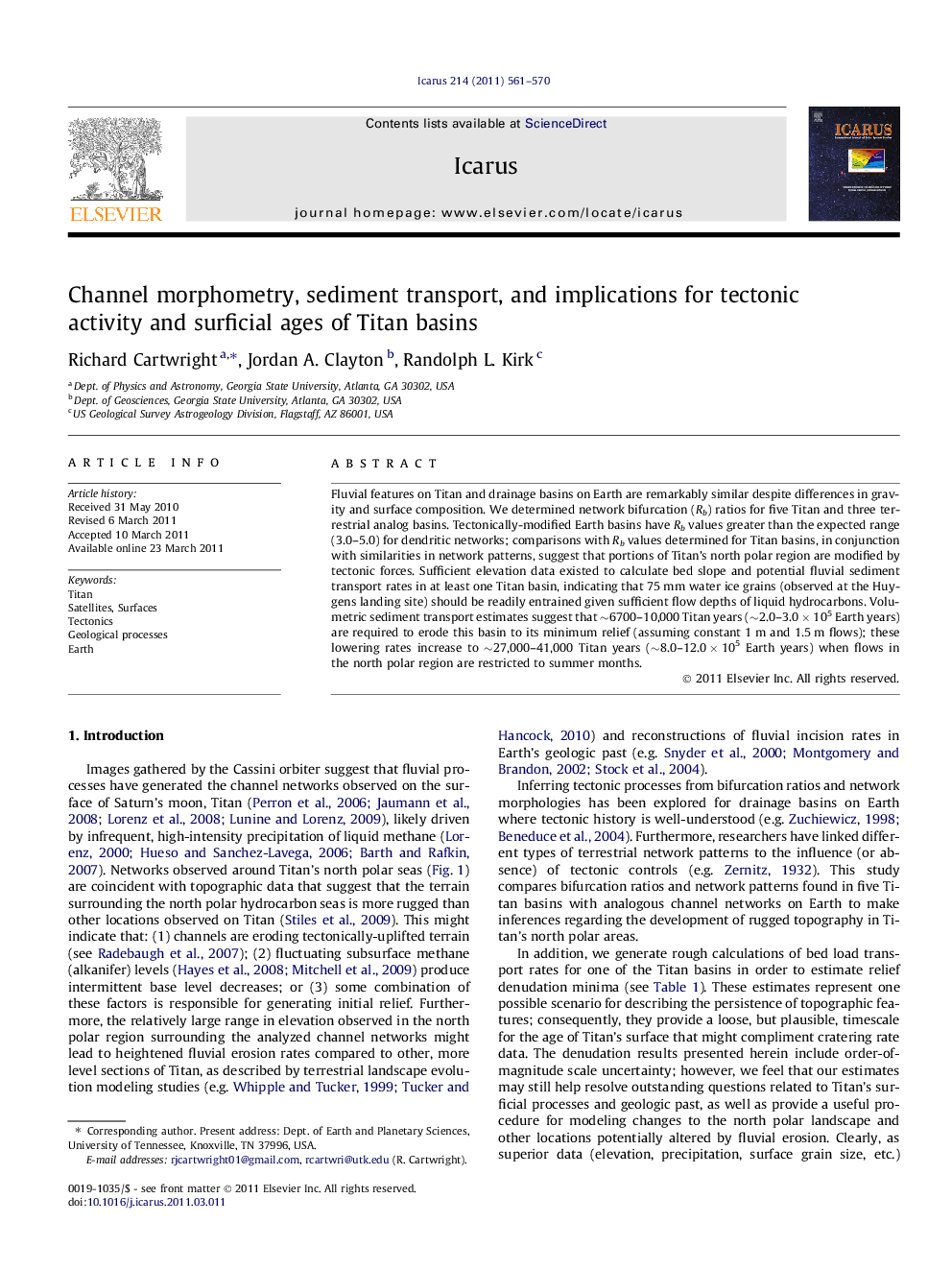| Article ID | Journal | Published Year | Pages | File Type |
|---|---|---|---|---|
| 1774196 | Icarus | 2011 | 10 Pages |
Fluvial features on Titan and drainage basins on Earth are remarkably similar despite differences in gravity and surface composition. We determined network bifurcation (Rb) ratios for five Titan and three terrestrial analog basins. Tectonically-modified Earth basins have Rb values greater than the expected range (3.0–5.0) for dendritic networks; comparisons with Rb values determined for Titan basins, in conjunction with similarities in network patterns, suggest that portions of Titan’s north polar region are modified by tectonic forces. Sufficient elevation data existed to calculate bed slope and potential fluvial sediment transport rates in at least one Titan basin, indicating that 75 mm water ice grains (observed at the Huygens landing site) should be readily entrained given sufficient flow depths of liquid hydrocarbons. Volumetric sediment transport estimates suggest that ∼6700–10,000 Titan years (∼2.0–3.0 × 105 Earth years) are required to erode this basin to its minimum relief (assuming constant 1 m and 1.5 m flows); these lowering rates increase to ∼27,000–41,000 Titan years (∼8.0–12.0 × 105 Earth years) when flows in the north polar region are restricted to summer months.
► We evaluate networks and bifurcation ratios for five Titan and three terrestrial basins. ► Three Titan basins are dendritic with bifurcation ratios below the terrestrial range. ► Two Titan basins display patterns suggestive of potential tectonic influence. ► We use sediment transport rates to generate a timescale for lowering a Titan basin. ► The denudation timescale ranges from ∼60 Kyr to 470 Myr, depending on model inputs.
